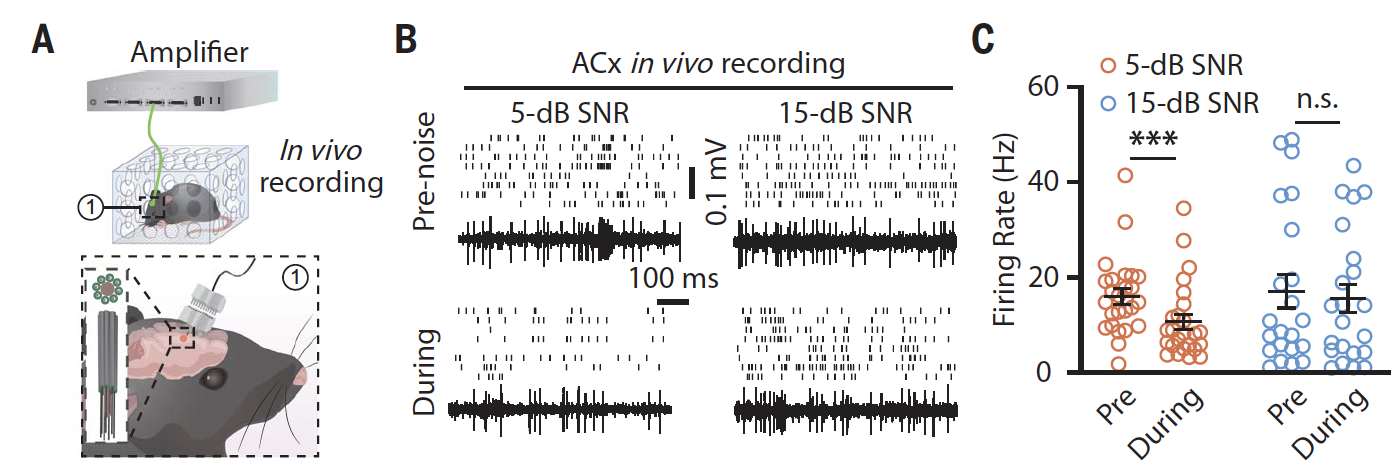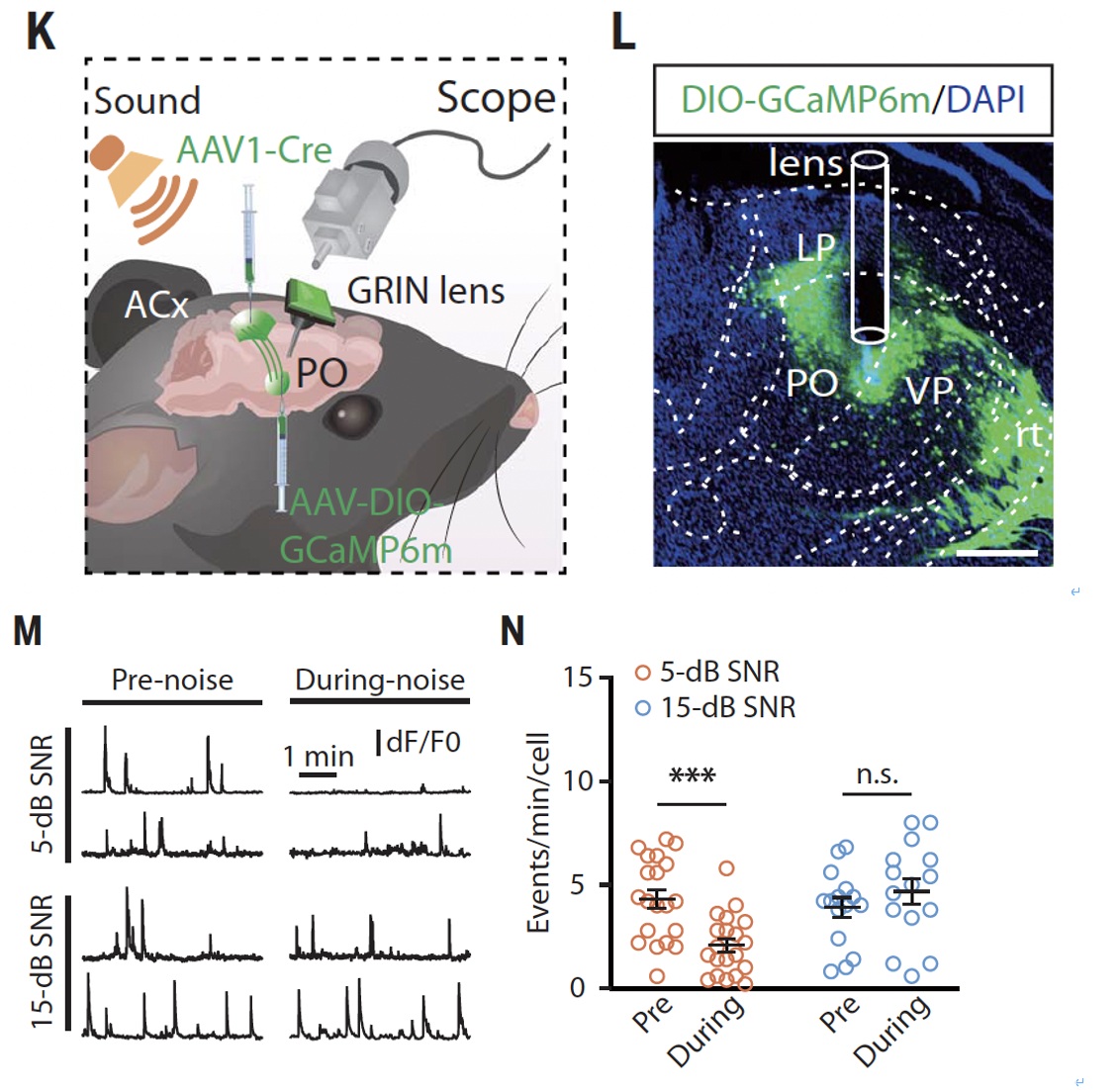- E-mail:BD@ebraincase.com
- Tel:+8618971215294
Sound, including music and specific frequency noise, can alleviate pain in humans. Existing research has shown that the activity of the somatosensory thalamus can be influenced by music and innocuous salient auditory stimuli. Here, researchers validated that the thalamic posterior (PO) and ventral posterior (VP) nuclei receive substantial inputs of damaging information from glutamatergic neurons in the auditory cortex and explored the roles of these two circuits in sound-induced analgesia.
Because loud noises (above ~75 dB) induce escape behavior in mice, we examined the differences in their nociceptive thresholds when exposed to different levels of noise.
Researchers conducted conditioned place aversion (CPA) and conditioned place preference (CPP) tests to assess the potential effects of sound on the affective component of pain.The 5-dB, but not 15-dB, SNR white noise abolished the subthreshold von Frey (0.04 g) stimuli-induced place aversion in the CPA test and evoked a preference for the sound-delivery side in the CPP test. They also found that a 5-dB SNR sound elevated the thermal nociceptive threshold in the Hargreaves test.
We conducted in vivo multitetrode and fiber photometry recordings in freely moving CFA mice. PO rather than VP neurons were rapidly activated by punctate mechanical stimulation of inflamed hindpaws (Fig. 2, A to C). PO neuronal activity was significantly enhanced in CFA mice compared with saline-treated controls, which was attenuated by 5-dB, but not 15-dB, SNR white noise.

Fig2:Schematic for multitetrode recording in freely moving mice. (B and C) Raster plots and voltage traces of the spontaneous firings recorded in the ACx (B) and summarized data (5-dB SNR, n = 25 cells from four mice; 15-dB SNR, n = 22 cells from four mice; P = 0.0053) (C).
The activity of PO neurons receiving ACx projections (POACx) was measured in mice with ACx infusion of AAV1-Cre virus and ipsilateral PO infusion of AAV-DIO-GCaMP6m (Fig. 3, K and L). The Ca2+ transient frequency of POACx neurons was rapidly increased by punctate mechanical stimuli. The spontaneous Ca2+ transient frequency of these neurons was elevated in CFA mice compared with saline mice, and the increased frequency was attenuated during exposure to 5-dB, but not 15-dB, SNR white noise(Fig. 3,M and N).

Fig3: The spontaneous Ca2+transient frequency of these neurons was elevated in CFA mice compared with saline mice, and the increased frequency was attenuated during exposure to 5-dB, but not 15-dB, SNR white noise (M and N).
Article Source:
https://www.science.org/doi/full/10.1126/science.abn4663
BC-0017-9,AAV-EF1α-DIO-EYFP
BC-0016-9,AAV-EF1α-DIO-mCherry
BC-0159-Re,AAV-hSyn-SV40 NLS-Cre
BC-0087-9,AAV-EF1α-DIO-GCaMP6m